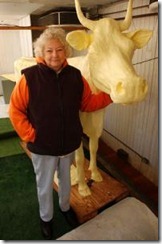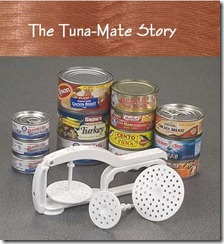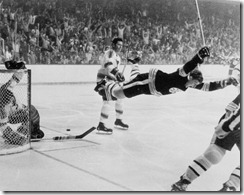What with the 4th of July coming up next week, I was wondering what George M. Cohan – “A real live nephew of my Uncle Sam, born on the Fourth of July” – would look like if he were still alive. He’d be 133, so he’d probably be a little wizened. Would he look like Jimmy Cagney with a shrunken head? Perhaps Variety will take up my suggestion and imagine what little Georgie Cohan would look like, giving us the old soft-shoe.
And what of JFK? He would have been 94 in May. Would he have been a fit, virile, viagra-fueled 94, or would he have looked like his mother, Rose, sitting around in a wheel chair in a big straw hat, soaking up the Hyannisport sun and reminiscing about Judith Exner and Marilyn Monroe. Marilyn would be 85. Perhaps some enterprising video artist can do a fast forward on Marilyn in that fabulous body-hugging diaphanous dress, breathlessly singing “Happy Birthday, Mr. President.” That I’d like to see.
But speaking of diaphanous, at least one of our wishes to see what someone would look like if they were still alive is being fulfilled. Newsweek’s cover this week features:
…a computer-generated image of a stylish Princess Diana, as she might look now, walking with Kate Middleton.
I bet that’s making Kate and her new hubby very happy. I mean, what newlyweds wouldn’t wanted see the live daughter-in-law chilling with a rendering of the dead mother-in-law. That appreciative, fond, side-wise glance from Kate is an especially nice touch.
Why, I’ll betcha Willa and Kate are probably petitioning The Queen Grandmum to get Newsweek editor Tina Brown on the next honours list.
honours list.
I do see that Lady Tina is already a CBE (Commander of the Order of the British Empire). I think it’s high time she was honoured as the dame she surely is, with a Dame Commander of the Order of the British Empire (DBE).
I’ll bet the kudos to Tina are just flying out of Buckingham Palace.
"What would she have been like?" Brown writes of Diana, who would have turned 50 on Friday [July 1], nearly 14 years after her death in a Paris car crash. "Still great-looking: that's a given."
Perimenopausal.
That’s a given, too.
So she might well have been hot-flashing and sweating her head off in that saucy saucer chapeau that Newsweek imagines her in.
Botoxed or nipped and tucked?
Likely.
Other than that, all I can say is Wow! This is newsworthy?
There’s the looming debt ceiling crisis. The announced drawdown of the troops in Afghanistan. Michelle Bachman’s titanium spine. Gay marriage passing in NY. And, I know I’m being parochial here, the capture of Whitey Bulger.
Not to mention that this is the Fourth of July issue, when Newsweek could have done a baseball-hotdog-apple-pie-and-Chevrolet roundup on what’s still working in the good ol’ USA.
But all those topics are trite, boring, decidedly non-edgy.
Who’s going to want to hang out at the beach reading a magazine with an 8 year old unwitting suicide bomber on the cover? Ewww! News! Yuck!
So instead we imagine Diana at 50.
I never thought I’d be quoting Sarah Palin, but talk about lamestream media.
Although once in a while we also got US News and World Report, my family subscribed to Newsweek.
Most people read Time (The Weekly News Magazine) or Newsweek, but I believe Time was the more popular of the two. Anyway, for whatever reason now lost in the shreds of time, we got Newsweek. While it may well be that my father thought that Henry Luce of Time was an old fart, I suspect the reason was economic and/or the fact that my parents were always drawn to the runner-up. We also got Look, rather than Life. As my mother would say when we whined about having Keyword rather than Scrabble, and Easy Money rather than Monopoly, “why do you want to be like everybody else?”
Well, maybe because everybody else is normal, Ma, while we’re a bunch of odd-ball freaks – but, of course, when we were whining about Monopoly none of us had figured the freak part out quite yet.
Anyway, between my years as a Monopoly-craving whiner and my acceptance, and embrace, even, of my odd-ball-ness, I was an avid reader of Newsweek.
And so I learned about Barry Goldwater’s campaign, the Watts Riots, Yves Saint Laurent’s Mondrian dresses. Read why The Graduate was important, and just what placed The Group on the best seller list.
Newsweek was also a prime source for pictures used to illustrate the collages that my sister Kath and I made for our bedroom doors. We glued photos from the news and ads onto rolls of shelf paper, and captioned them with our own witty little asides. (I told you we were odd-balls.)
I remember one in which I pasted three small pictures of Ho Chi Minh, next to which I wrote, “What’s new besides ho-ho-ho?”, which was the catchphrase used in Jolly Green Giant ads.
Oh, we weren’t all brainy nerdiness.
Another thing you could do with Newsweek was take a pencil eraser to the eyes of whoever was on the cover and white them out, leaving a really spooky looking portrait of Lyndon Johnson or Harold Macmillan, those blank eyes staring out at you from the living room coffee table. This was mostly my brothers’ bailiwick – and it used to drive my father nuts. I did it once, to a cover graced by Dwight Eisenhower.
Couldn’t resist!
These days, the only Newsweek I ever see is in the doctor’s office.
These days, I’m an Economist-a. (It really is the world’s best weekly news magazine.)
And not that I’m going to go out and buy a copy of the latest Newsweek to see what Princess Di might look like at 50, but, if I were to, I would be sorely tempted to see what she’d look like with her eyes whited out.


 seen these babies on offer at the Zayre’s in the Webster Square Plaza sometime in the late 1950’s. The color of the bat, by the way, is trademarked: no one else can produce bright yellow plastic bats. Take that, China trade!
seen these babies on offer at the Zayre’s in the Webster Square Plaza sometime in the late 1950’s. The color of the bat, by the way, is trademarked: no one else can produce bright yellow plastic bats. Take that, China trade!




